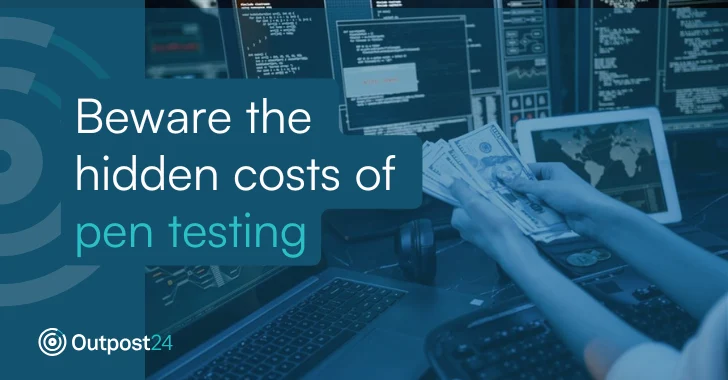
Penetration testing helps organizations secure their IT systems, but it shouldn’t be treated with a one-size-fits-all approach. Traditional approaches can be rigid, cost organizations time and money, and produce poor results.
The benefits of penetration testing are clear. By allowing “white hat” hackers to attempt to penetrate your system using similar tools and techniques as their adversaries, penetration testing can give you peace of mind that your IT configuration is secure. Perhaps more importantly, you can also flag areas for improvement.
As the UK’s National Cyber Security Center (NCSC) points out, this is comparable to a financial audit.
“The finance team tracks spending and income on a daily basis. Audits by external groups ensure that internal team processes are sufficient.”
While the benefits are clear, it’s important to understand the actual cost of the process. In fact, traditional approaches often require significant time and effort from your team. You need to get your money’s worth.
The hidden costs of penetration testing
There is no set format for penetration testing. It depends on what exactly you’re testing, how often penetration testing is done, and how it’s done. Nevertheless, the classic approaches have some common elements that can result in significant costs, both in terms of finances and employee time.
Let’s take a look at some of the costs that may not be immediately obvious.
Administrative overhead
Arranging a “traditional” penetration test can involve key administrators. First, you need to coordinate a schedule between your organization and the testers you hire to perform the tests on your behalf. This can cause significant disruption to employees and make them unable to concentrate on their daily tasks.
Additionally, before testing, you should create a clear overview of the resources and assets at your disposal, including by collecting a system inventory. You will also need to prepare hacker access credentials depending on the type of penetration testing approach you are performing. For example, a tester might need these credentials to develop a risk-based scenario in which a disgruntled employee targets the system.
scope complexity
Again, it is important to determine the exact scope of the test. What is “in scope” for hackers and what should remain out of scope?
This is determined internally and is built on several factors, depending on your organization’s exact needs. For example, there may be certain applications that cannot be included in the test. Whatever the reason, determining the overall scope of testing takes time.
Of course, this is not absolutely certain. Some organizations may be dealing with highly sophisticated environments that change over time. Resources should be dedicated to assessing the potential impact of these changes. Should testers include new elements to target as the environment changes?
All of this increases the risk of “scope creep,” where penetration testing expands beyond its original purpose, creating additional work and costs for both in-house teams and external testers.
overhead costs
As we’ve seen, penetration testing by its very nature can pose significant risks of disruption to your team, including disrupting operations for the duration of the test. It is important to have this under control from the beginning.
There are also time and costs associated with repairs. This is a somewhat ill-defined stage that involves consultation with the tester to overcome and resolve any issues that may have arisen during the penetration test. This may include retesting. That means starting yet another penetration test to make sure everything is secure.
All of this can cost your organization extra time and money.
Budget management challenges
You should also consider how you will pay for the work. For example, do you choose a fixed-cost pricing model, where the tester provides a set fee, or do you choose “time and materials”, where the tester provides an hourly rate based on estimated hours (or on another scale), but anything above that estimate is added?
“There’s a reason why the cost of penetration testing is so difficult to benchmark: Each company’s tests are unique,” notes Network Assured, which provides independent pricing guidance for penetration testing and other cybersecurity services.
So how can you achieve the best return on investment and optimize cost effectiveness?
 Figure 1: When talking about the overall cost of penetration testing, some factors may not be immediately obvious.
Figure 1: When talking about the overall cost of penetration testing, some factors may not be immediately obvious.
Penetration Testing as a Service (PTaaS)
To ensure you get the penetration testing functionality you need (at a reasonable cost), an “as a service” approach is beneficial. Such an approach can be customized to your needs, reducing the risk of unnecessary work.
For example, Outpost24’s CyberFlex combines the strengths of penetration testing as a service (PTaaS) and external attack surface management (EASM) solutions to provide continuous coverage of application attack services with a flexible consumption model. This enables organizations to achieve their desired discovery, prioritization, and reporting needs while gaining complete visibility into costs and capabilities.
Penetration testing is essential for defending an organization’s systems, but cutting-edge functionality doesn’t necessarily have to cost the world. By taking a smart approach to delivering needed services at the right time, you can discover vulnerabilities that need to be addressed without undue disruption or unnecessary costs. Schedule a live demo of CyberFlex today.
Source link

